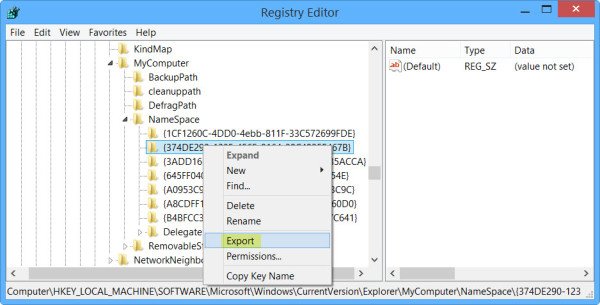

- #Windows 10 automatic folder backup update#
- #Windows 10 automatic folder backup full#
- #Windows 10 automatic folder backup windows 10#
- #Windows 10 automatic folder backup iso#
- #Windows 10 automatic folder backup free#
There are many different programs available, so be sure to do some research to find one that suits your needs.
#Windows 10 automatic folder backup windows 10#
Another way to backup Windows 10 is to use the built-in backup feature in Windows 10. One way is to use a third-party backup program. You can backup Windows 10 to DVD in a few different ways.
#Windows 10 automatic folder backup iso#
Drag and drop your Windows 10 ISO file to CD/DVD window.

Step 4. Open File Explorer, and click This PC. Type the disc title in the Burn a Disc window and select Like a USB flash drive.Ĭlick Next and wait for the disc is being formatting. Step 4. Click Next and select your C drive with the system files you want to copy. Step 3. In the Create a system image window, click On one or more DVDs and choose the DVD you want to backup your Windows 10 system. Step 2. Navigate to the Backup and Restore window and click Create a system image from the left side. And click Backup and Restore (Windows 7) under the System and Security tab. Step 1. Type and open Control Panel on the search box. Preparation - Insert your DVD drive into the computer and follow the steps below to create a system image backup.
#Windows 10 automatic folder backup free#
Need to backup the app data or use profiles? Navigate to free backup and recovery software. As a result, you may need to use another backup solution for these types of data. Additionally, while the utility can back up personal files, it cannot back up application data or user profiles. For example, Windows 10 Backup and Restore (Windows 7) can only restore backups created with the same utility. However, there are also some limitations to consider. The utility has several highlights, including the ability to schedule backups and create system images. Windows 10 Backup and Restore (Windows 7) also allows you to create a system image, which is a complete backup of your Windows 10 installation, including your files, settings, and applications.
#Windows 10 automatic folder backup full#
The utility can create full backups, which include everything on your system, or incremental backups, which only back up files that have changed since the last backup was created. It can be helpful in case of a system crash or if you need to reinstall Windows 10. Windows 10 Backup and Restore (Windows 7) is a utility that allows users to create backups of their Windows 10 system and their files. Use Windows 10 Backup and RestoreĪnother way to backup Windows 10 to DVD is to use Windows 10 backup and restore. In addition, some changes made in the Settings app (such as extra backup folders) aren't reflected in the Control Panel, which could lead to confusion if you need to adjust the options in the future.Backup Computer to Cloud #2. The Control Panel interface is dated and doesn't expose all the available options. However, we recommend using the Settings app to manage File History. Some of these options are also available through the File History page in the Control Panel. You can change the backup schedule, restrict File History's disk usage on the backup drive, or blacklist folders with the "Exclude these folders" section at the bottom of the page. The rest of the options on this page let you finetune File History's operation. Click the "Back up now" button at the top of the page to immediately run the backup and copy the new files. We recommend including any folders which contain personal files, as well as folders which store application configuration files (these are usually C:ProgramData and C:Users%userprofile%AppData). Repeat the process to add further directories. Click the "Add a folder" button to add another directory. Under "Back up these folders," you'll see a list of the locations which are included in your backup. Here, you can customise File History's operation. We'll assume you've already setup File History if not, toggle the "Automatically back up my files" button to enable the feature.Ĭlick the "More options" link on the Backup page. Open the Settings app from the Start menu and click the "Update and security" category.
#Windows 10 automatic folder backup update#
Only the Settings app contains the option to add extra folders to your backup – the Control Panel won't even update to show you've included the new locations. If you want to add more directories to the backup, read on to be shown how.įile History is one of Windows' features which still has its settings spread across the Settings app and the traditional Control Panel. After you enable the feature, you'll find your libraries and user profile folders are automatically copied to your backup destination. File History saves copies of your files periodically, giving you the ability to go back in time and recover earlier versions.īy default, File History is configured to backup a set of commonly used folders. Windows 10 retains the File History backup feature which was introduced with Windows 8.


 0 kommentar(er)
0 kommentar(er)
